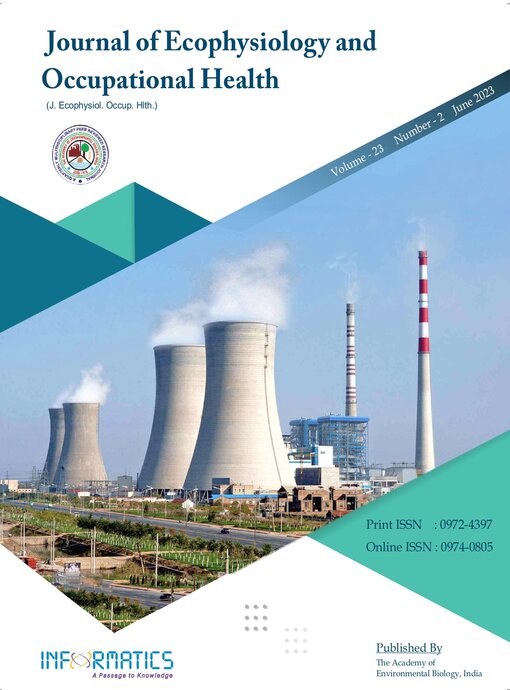Effect of Endurance Training on Long-Term Stroke Survivors
DOI:
https://doi.org/10.18311/jeoh/2023/33414Keywords:
Chronic Stroke, Endurance, Quality of Life (QOL)Abstract
Background: Stroke is one of the leading causes of dependency and mortality in India. Chronic stroke is defined as 6 months to years from the time of onset. Structural impairment which occurs in stroke lead to the complex nature of functional limitations. High blood pressure, diabetes mellitus, blood vessel diseases, and obesity are a few risk factors that can cause stroke. Once the patient goes into the chronic phase, a wide range of problems in functional mobility, gait, and Quality of Life may occur. Majority of times the patient survives their remaining life with these disabilities. The survival rate decreases with an increase in time. Only 1% survive 20 years after stroke. Physiotherapy has shown a positive effect on functional outcomes in acute stroke. Its efficacy should be tried on chronic survivors. Method: 36 subjects were included as per the inclusion and exclusion criteria. The treatment protocol was given for 42 days. Pre and post-changes in subjects were analyzed on a modified Barthel index and stroke-specific Quality of Life scale. Result: Data was analyzed using the student’s t-test. Findings showed significant change in outcome measures interns of mobility and quality. Conclusion: Endurance training improves functional mobility and standard of living in chronic stroke survivors.
Downloads
Metrics
Downloads
Published
How to Cite
Issue
Section
License
Copyright (c) 2023 suraj kanase

This work is licensed under a Creative Commons Attribution 4.0 International License.
Accepted 2023-04-28
Published 2023-06-16
References
Aho K, Harmsen P, Hatano S, Marquardsen J, Smirnov VE, Strasser T. Cerebrovascular disease in the community: Results of a WHO collaborative study. Bull World Health Organ. 1980; 58:113–30.
Kamalakannan S, Gudlavalleti AS, Gudlavalleti VS, Goenka S, Kuper H. Incidence and prevalence of stroke in India: A systematic review. The Indian Journal of Medical Research. 2017; 146(2):175. PMid: 29265018 PMCid: PMC5761027. https://doi.org/10.4103/ijmr.IJMR_516_15 DOI: https://doi.org/10.4103/ijmr.IJMR_516_15
Jhaveri NH, Kanase S. Gender wise difference in presenting signs and symptoms of stroke: Observational study. Indian Journal of Public Health Research and Development. 2020; 11(5):270–3.
Gandhi HM, Kanase SB, Varadharajulu G. Awareness of oral contraceptive pills as a risk factor of stroke. Journal of Pharmaceutical Negative Results. 2022; 2783–8.
Chen Q, Cao C, Gong L, Zhang Y. Health related Quality of Life in stroke patients and risk factors associated with patients for return to work. Medicine. 2019; 98(16). PMid: 31008934 PMCid: PMC6494282. https://doi.org/10.1097/MD.0000000000015130 DOI: https://doi.org/10.1097/MD.0000000000015130
Kanase SB. Effect of motor relearning programme and conventional training on functional mobility in post stroke patients. Indian Journal of Public Health Research and Development. 2020; 11(5):496–501.
Azzollini V, Dalise S, Chisari C. How does stroke affect skeletal muscle? State of the art and rehabilitation perspective. Frontiers in Neurology. 2021; 12:797559. PMid: 35002937 PMCid: PMC8733480. https://doi.org/10.3389/fneur.2021.797559 DOI: https://doi.org/10.3389/fneur.2021.797559
Michael K, Macko RF. Ambulatory activity intensity profiles, fitness, and fatigue in chronic stroke. Topics in Stroke Rehabilitation. 2007; 14(2):5–12. PMid: 17517569. https://doi.org/10.1310/tsr1402-5 DOI: https://doi.org/10.1310/tsr1402-5
Srivastava A, Taly AB, Gupta A, Murali T. Post-stroke depression: Prevalence and relationship with disability in chronic stroke survivors. Annals of Indian Academy of Neurology. 2010; 13(2):123. PMid: 20814496 PMCid: PMC2924510. https://doi.org/10.4103/0972-2327.64643 DOI: https://doi.org/10.4103/0972-2327.64643
Virág A, Karóczi CK, Jakab A, Vass Z, Kovács É, Gondos T. Shortterm and long-term effects of nordic walking training on balance, functional mobility, muscle strength and aerobic endurance among Hungarian community-living older people: A feasibility study. The Journal of Sports Medicine and Physical Fitness. 2014; 55(11):1285–92.
Bonini-Rocha AC, de Andrade AL, Moraes AM, Matheus LB, Diniz LR, Martins WR. Effectiveness of circuit-based exercises on gait speed, balance, and functional mobility in people affected by stroke: A meta-analysis. PM&R. 2018; 10(4):398–409. PMid: 29111465. https://doi.org/10.1016/j.pmrj.2017.09.014 DOI: https://doi.org/10.1016/j.pmrj.2017.09.014
Kendrick C, Holt R, McGlashan K, Jenner JR, Kirker S. Exercising on a treadmill to improve functional mobility in chronic stroke: A case report. Physiotherapy. 2001; 87(5):261–5. https://doi. org/10.1016/S0031-9406(05)60788-2 DOI: https://doi.org/10.1016/S0031-9406(05)60788-2
Kong KH, Yang SY. Health-related quality of life among chronic stroke survivors attending a rehabilitation clinic. Singapore Medical Journal. 2006; 47(3):213.
Schmid AA, Van Puymbroeck M, Altenburger PA, Miller KK, Combs SA, Page SJ. Balance is associated with Quality of Life in chronic stroke. Topics in Stroke Rehabilitation. 2013; 20(4):340– 6. PMid: 23893833. https://doi.org/10.1310/tsr2004-340 DOI: https://doi.org/10.1310/tsr2004-340
Tsai JC, Yang HY, Wang WH, Hsieh MH, Chen PT, Kao CC, Kao PF, Wang CH, Chan P. The beneficial effect of regular endurance exercise training on blood pressure and Quality of Life in patients with hypertension. Clinical and Experimental Hypertension. 2004; 26(3):255–65. PMid: 15132303. https://doi.org/10.1081/ CEH-120030234 DOI: https://doi.org/10.1081/CEH-120030234
Flansbjer UB, Downham D, Lexell J. Knee muscle strength, gait performance, and perceived participation after stroke. Archives of Physical Medicine and Rehabilitation. 2006; 87(7):974–80. PMid: 16813786. https://doi.org/10.1016/j.apmr.2006.03.008 DOI: https://doi.org/10.1016/j.apmr.2006.03.008
Kanase SB, Varadharajulu G. Effect of task related training versus conventional training on walking performances in post stroke patients. Age (years). 2014; 54:53–15.
 suraj kanase
suraj kanase








